What are best egg laying chickens? Growing up on our family farm, we had several different kinds of chickens over the years to determine what worked best for our family. There are a lot a variables to determining the best flock for your family. Some of my fondest childhood memories revolve around tending to our various animals and helping maintain our flourishing vegetable gardens. In one of my recent blogs, “The Pear Tree: A Tribute to My Father,” I recalled precious moments spent working alongside my parents, learning the rhythms of farm life.
My siblings and I were incredibly fortunate—we never had to worry about where our next meal would come from. We did not have a lot of money for things, but we always had plenty to eat. Our gardens provided a bounty of fresh produce, and our farm animals provided us with an abundance of eggs, milk, and meat. My bedroom was the closest to the chicken house, and most mornings, I would wake up to the rooster crowing. Sometimes I would smell the fresh aroma of bacon and eggs being prepared for breakfast. This experience instilled in me a deep appreciation for self-sufficiency and a connection to our food sources that I carry with me to this day.
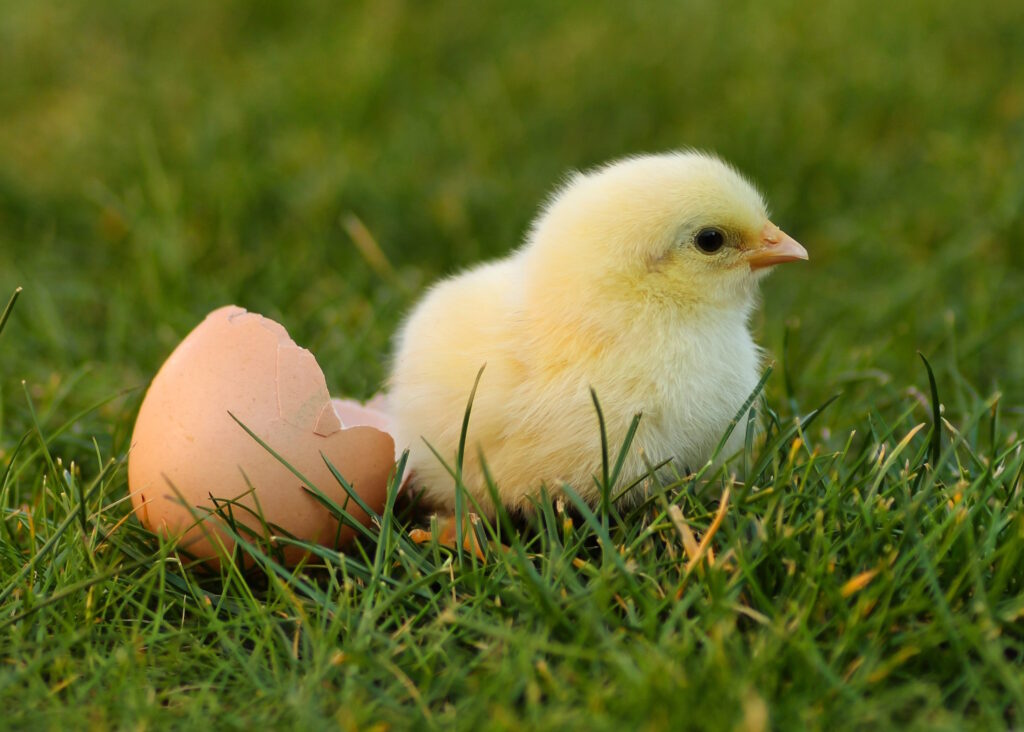
The Rich History of Keeping Laying Hens
The fascinating history of laying hens dates back thousands of years. When people first domesticated chickens, they were primarily used for religious ceremonies and cockfighting before being selectively bred for egg production. By 2000 BC, chickens were being raised specifically for egg production in ancient Egypt and China. The practice spread along trade routes, reaching Europe by 700 BC, where different breeds were developed for various purposes, including egg laying. Today, more than 500 distinct chicken breeds exist, each adapted to different climates, purposes, and farming practices.
Preparation: Setting the Foundation for Success
When I started raising chickens, I discovered proper preparation makes all the difference. Spring offers ideal conditions for beginning your flock – warming temperatures and increasing daylight perfectly support chick development. Research confirms spring-hatched chicks show better survival rates and stronger immunity. My July chicks required constant monitoring to prevent overheating, while February chicks struggled with cold. This year on our new homestead, I’m aiming for May chicks to balance these seasonal challenges.
Creating the Perfect Brooder Environment
I remember my mother teaching me about the importance of a proper brooder setup. Our chicken house featured a dedicated brooder room with a fabric-covered heater that could be adjusted as chicks grew, complete with a red temperature indicator light. My brothers handled the yearly cleaning, moving old bedding to fertilize our garden. Modern research confirms what farmers have long known—precise temperature control is crucial for chick survival. For our large family, Mom ordered 200-300 chickens annually, mostly for meat with some laying hens added.
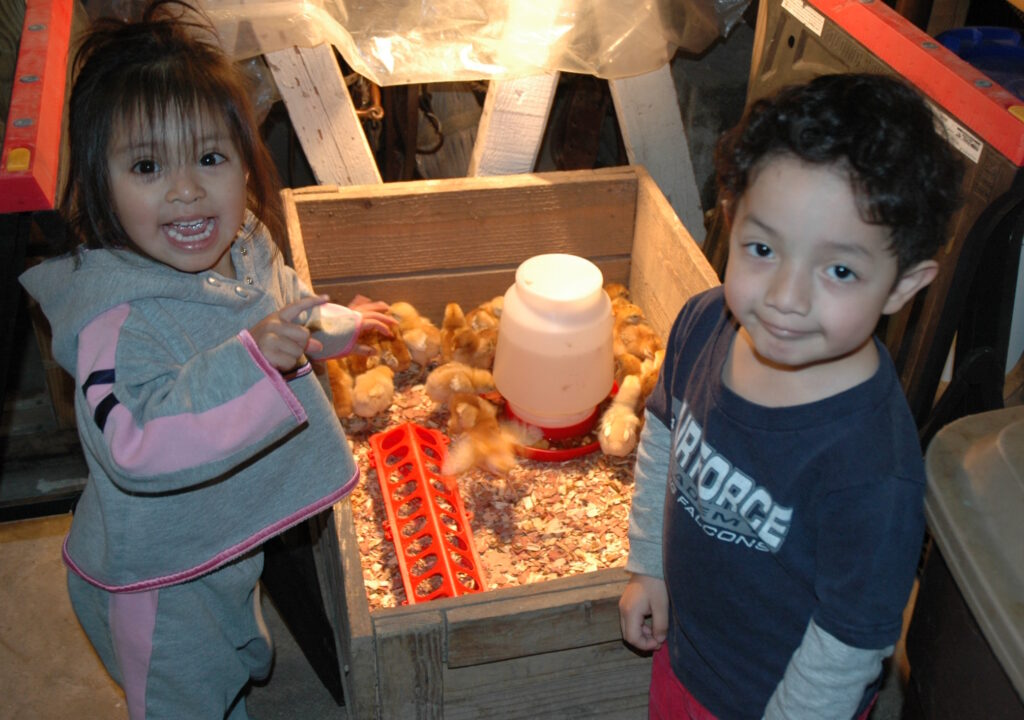
Essential Brooder Components:
- A reliable heat source (ceramic heat emitters provide consistent warmth without harsh light)
- Fresh bedding (pine shavings work best in my experience) Note: do not use cedar shavings; they are toxic to chicks
- A shallow waterer to prevent drowning
- A chick-specific feeder
- A thermometer for monitoring temperature
- A draft shield or protective barrier to block cold air currents and prevent chicks from wandering too far from the heat source
- A secure cover or lid to protect chicks from predators and prevent escape attempts
- A designated area for food and water that’s easily accessible but won’t get contaminated with bedding
- Supplemental lighting if natural light is limited, maintaining a consistent day/night cycle
- A backup heat source in case of primary heater failure or power outages
Depending on how many chicks you plan to raise will depend on the room you will need. If you are raising several hundred, like my mother did, you will need a relatively large space. If you only have a handful, then something like a large wooden box or rubber stock tank might work well for you.
Understanding Temperature Requirements
Research and established practices have shown that temperature management is critical for chick development. The brooder should start at 95-100°F (35-38°C) in the first week, decreasing by 5°F each week until reaching room temperature. This gradual reduction mimics the natural process of a mother hen’s care while supporting proper feather development and growth.
Initial Care: The Critical First Days
Those first few days with new chicks are both exciting and crucial. On our family farm, new chicks generally arrived shortly before Easter. My siblings and I would eagerly gather around the brooder, captivated by these tiny creatures and learning about their delicate care requirements. We had to shut the door quickly and carefully, making sure not to step on a stray chick. Sometimes we were able to hold a soft bundle of fluff. It was fascinating to watch them, and we would observe their behaviors, from their first tentative pecks at feed to their playful interactions with each other. Research has validated many of these traditional practices, showing that the first 72 hours are critical for chick survival and long-term health.
Feeding for Success
Having raised multiple generations of laying hens, I’ve refined my feeding protocol based on both experience and scientific research. Studies show that chicks require feed with 20-22% protein content for optimal development. I always use a high-quality chick starter feed and supplement with probiotics to support digestive health. It’s also important to transition gradually between different types of feed as the chicks grow, ensuring their nutritional needs are met at each developmental stage.
Water: The Foundation of Life
One of the most important guidelines for new chicks is proper hydration. Water should be maintained at body temperature (100°F) for the first day, gradually transitioning to room temperature by day three. Adding sugar to the water initially can help new chicks drink more readily. This practice, supported by research, helps prevent shock and promotes better feed consumption. Additionally, it’s essential to keep waterers clean and regularly refreshed throughout the day, as contaminated water can quickly lead to health issues in young chicks.
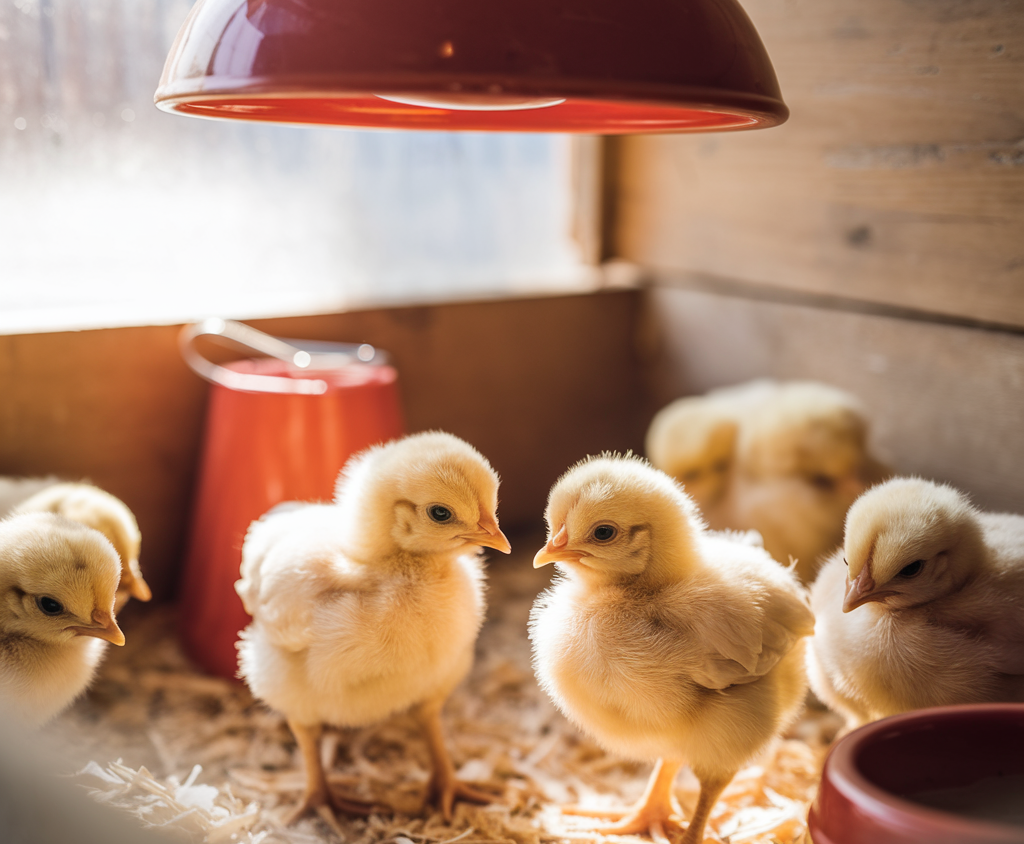
Growth and Development: Weeks 2-6
During this critical period, focus on monitoring growth rates and behavior. Recent studies have shown that proper nutrition and environmental conditions during these weeks directly impact future egg production capacity. It would be a good idea to maintain detailed records of feed consumption and weight gain, a practice that can help you to optimize your flock’s development over the years.
The Transition to the Coop
Moving chicks to their permanent home requires careful planning. I’ve designed my coop based on both traditional wisdom and modern research findings. Research demonstrates that proper ventilation can reduce respiratory issues by up to 70%, while adequate space (1 square foot per bird for roosting and 4 square feet per bird for living quarters) promotes natural behaviors and reduces stress. It’s also vital to ensure the coop has secure latches and predator-proof features, as this transitional period can make young birds particularly vulnerable to nocturnal predators. Chicks will need some sort of ramp or step if their coop is off the ground. We unknowingly made our first chicken ramp too steep, and the chickens had trouble climbing it at night.
Integration and Social Development
When introducing new chicks to an existing flock, research states that allowing visual contact while maintaining physical separation for 1-2 weeks significantly reduces aggressive behaviors during integration. However, some chickens are just born to fight. At our old place, we kept new roosters in the smaller pen and the older rooster in with the hens. There were fights between the chicken wire, and sometimes blood was drawn. It was hard for them to reconcile. Another practice for integration is bringing new chickens to the flock in the evening when it is too dark to fight.
The Benefits of Raising Organic Chickens
Raising organic chickens provides numerous benefits for both consumers and the environment. Organic chickens are raised without antibiotics or synthetic hormones, which results in healthier meat and eggs. Research has shown that organic eggs contain higher levels of omega-3 fatty acids and essential vitamins compared to conventional eggs. Additionally, organic farming practices prioritize animal welfare, ensuring chickens have access to outdoor spaces and a natural diet free from pesticides and Genetically Modified Organism (GMOs). By choosing to raise organic chickens, you contribute to a healthier food system.
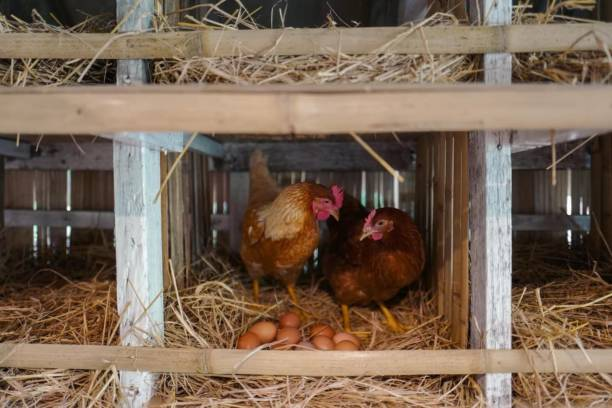
The Science of Egg Production
The process of egg formation is truly remarkable—it takes approximately 24 to 26 hours for a hen to produce a single egg, with the shell alone requiring about 20 hours to develop. Several factors influence egg production, including photoperiod (sunlight), nutrition, stress levels, and genetics. Ensuring optimal conditions for your hens not only enhances their well-being but also maximizes their laying potential.
Nutritional Requirements for Healthy Egg Production
Proper nutrition is the foundation of a productive flock. Scientific research shows that hens require a balanced diet to maintain consistent egg production and overall health. Key nutritional components include:
- Protein (16-18%): Essential for muscle maintenance and egg formation.
- Calcium (4%): Crucial for strong eggshells, supplemented with crushed oyster shells or limestone.
- Essential amino acids and vitamins: Support metabolism, immunity, and reproductive health.
- Fresh, clean water: Hens consume 0.5 to 1 cup of water per day, which is vital for digestion, hydration, and egg production.
Additionally, allowing hens to free-range enhances their diet naturally, as they forage for insects, seeds, and greens. Free-ranging increases egg nutrition content by up to 30%, producing healthier, more nutrient-rich eggs.
Breed Selection and Genetics
Different chicken breeds have varying egg-laying capacities, temperaments, and environmental adaptations. Understanding breed characteristics can help you select hens that align with your climate, space, and production goals.
- Heritage breeds (e.g., Rhode Island Reds, Plymouth Rocks) typically lay 200-250 eggs per year and are hardy, long-lived birds suited for small farms and backyard flocks. Note: Rhode Island Reds have also been bred for cockfighting, so their disposition is not always the best.
- Hybrid layers (e.g., ISA Browns, Golden Comets) are bred for efficiency, producing up to 300 eggs annually, but may have shorter lifespans.
- Eggshell color and size consistency are determined by genetics, with breeds like Leghorns producing white eggs, while Orpingtons and Marans lay brown or dark chocolate-colored eggs.
By choosing the right breeds and maintaining a nutrient-rich diet, you can optimize your flock’s productivity while ensuring their health and well-being.
Sustainable Practices and Environmental Impact
Running our mini-farm has taught me the importance of sustainable practices. Environmental data now quantifies what farmers have known for generations—small-scale poultry operations can significantly contribute to local ecosystem health and sustainability. Backyard chicken flocks also help with natural pest control and provide valuable fertilizer for gardens, creating a closed-loop system that benefits both the environment and local food production.
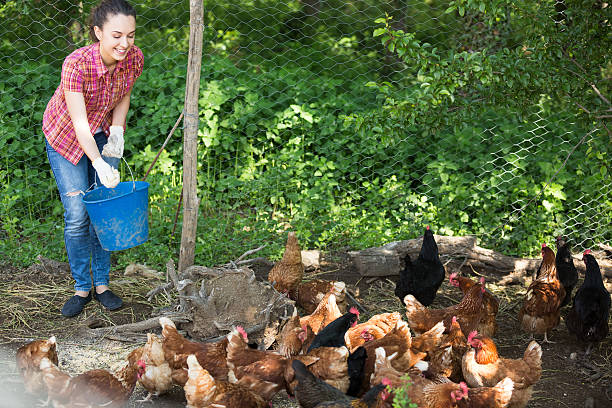
The Rewards of Chicken Keeping
Beyond the practical aspects, raising chickens brings immeasurable joy and connection to nature. Caring for animals can reduce stress levels and improve mental wellbeing. I’ve witnessed this firsthand through my years of chickenkeeping. The daily routine of tending to chickens can provide a sense of purpose and structure, while their unique personalities and social interactions offer endless entertainment and learning opportunities. Last summer we had one daring hen, named Henny-Penny, who would leave the safety of the flock, sneak under the fence, and find her way to the lean-to, where she would lay an egg. She could not be coaxed back before sunset, but if you were patient, she would be at the door waiting to be put to bed after all the other chickens were on the roost for the night.
Economic Benefits and Food Security
The economic advantages of maintaining a laying hen flock are substantial. Based on my experience and current market research, a small flock of 6–8 hens can produce enough eggs to feed an average family while potentially saving $300–500 annually on grocery bills. Beyond the direct cost savings, home-raised eggs often command premium prices at local farmers’ markets, providing an opportunity for small-scale producers to generate supplemental income.

Flock to Freshness
Raising chickens is more than just a means of producing fresh eggs—it’s a journey toward self-sufficiency and mindful living. Careful preparation, proper nutrition, and ethical practices all contribute to a thriving flock and healthier lifestyle.
By choosing to raise your own chickens, you are taking an active role in your overall health and lifestyle. You gain access to healthier food while supporting an environmentally responsible food system.
Daily egg collection reminds us of our connection to the earth and our responsibility to it.



